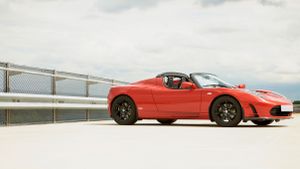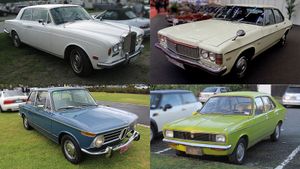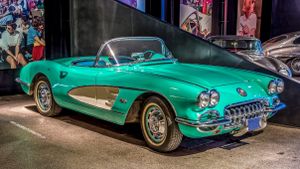Once the weak sister of sports-car companies, Plymouth jumped into the performance field for 1956 with its limited edition Plymouth Fury that did nothing but get better for 1957 and 1958. The first Furys were the plushest and most potent Plymouths of the decade. Today, they're coveted for their high style, low production, and great go.
 ©2007 Publications International, Ltd. The 1956 Plymouth Fury helped Plymouth get into the performance-car game. See more classic car pictures. |
Chrysler Corporation chairman Kaufman Thuma Keller previewed his company's all-new 1955 models shortly before they went into production. At the Plymouth studio he saw a clay model unlike any previous Plymouth, with sleek lines, peaked fenders, and a clean bar grille. Stylists told him they thought it was pretty good. "It'd better be," old K.T. shot back. "We can't afford another mistake."
Keller admitted that he was partly responsible for Chrysler's styling inertia in the years following World War II. For the company's first post-war redesign of 1949, he'd insisted on cars "tall enough to get into while wearing a hat," and he got them.
Styling wasn't too crucial during the unprecedented seller's market of the late-1940s, but once competition toughened and Ford launched its 1953 sales blitz, Chrysler products were perceived as dumpy and outdated. Bread-winning Plymouth took a sales beating in 1954. Calendar year volume totaled only 399,000 units, a disappointing fifth-place finish that marked the first time since 1930 that Plymouth had not been number three.
But Keller could relax. The 1955 Plymouth was no mistake, and neither was its finned 1956 successor. Entirely restyled and available with Plymouth's first V-8, they were dramatically new, colorful, handsome, and quick.
Plymouth duly claimed fourth in industry production for both years, then regained third place in 1957. Its sister makes did equally well. Today, however, historians remember banner 1955 mainly for the rejuvenation it brought Chrysler Corporation.
A key figure in a more recent Chrysler rejuvenation, Lee Iacocca, has pointed out that once you're selling standard stuff at a good clip, you're allowed to have fun. For Iacocca, fun began with the reborn convertible. For Chrysler in the mid-1950s, fun meant high performance.
The company had introduced its hemispherical-head V-8 for 1951. Just four years later, this mighty engine was powering the first of the great Chrysler 300s, which quickly dominated NASCAR and AAA stock-car competition. The 300s allure was a big plus in the showroom, where it prompted many buyers to plump for a Windsor or New Yorker.
This sales value naturally encouraged other divisions to think similar thoughts, and each had a limited-production, high-performance special available for 1956. Dodge offered the D-500 option for any model in its lineup, while DeSoto added the Adventurer hardtop coupe and Plymouth fielded the Fury. The last outsold all its high-power stablemates combined.
Keep reading to learn more about the 1956 Plymouth Fury.
For more information on cars, see:
Advertisement























